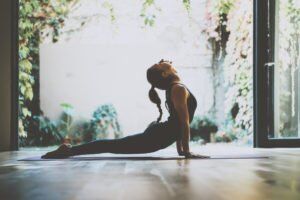
Top Tips On How To Destress | Breathing Techniques
“Take a deep breath” that is usually one of the first things you hear when someone is nervous, anxious, or panicking. But how good is this advice? In this article, we will be looking at the best breathing techniques to destress, and help you tackle future anxiety and stressful situations.
How Does Breathing Affect Stress?
There are hundreds of articles out there that talk about breathing and its ability to reduce stress, but few explain how it works.
The most likely explanation is that breathing can help to lower blood pressure. It may also prevent cortisol levels from rising, though science is not yet sure about how this works exactly.
But it isn’t just any form of breathing that lowers stress, some forms of breathing can actually increase it! Fast breathing or deep breathing can lead to hyperventilating, which increases blood pressure, reduces oxygen to the brain, and almost certainly increases cortisol too.
The following breathing techniques will help you to lower your anxiety or stress and are simple to learn.
 Breathing Technique #1 Simple Deep Breathing
Breathing Technique #1 Simple Deep Breathing
This first technique is the one that is probably the most familiar to you. It takes between three and five minutes to fully work and is a great way to calm yourself down after a shock or in response to stress or anxiety.
What is great about this technique is that it works as a form of meditation, the length of time you perform it for will really help you to focus on your breathing and you can begin to turn your attention to the task at hand.
You can perform this seated or standing, either works well. Just ensure that you feet are flat on the floor, your arms are either by your side, or resting on the arms of a chair, and if you are sitting, make sure that you are sitting upright.
- Take a deep breath in through your nose, perform this for a count of five
- Do not hold your breath or pause
- Once your lungs are full begin to breathe out through your mouth
- Count to five as you do so
- This prevents you from breathing too fast and hyperventilating
- Repeat this for 3-5 minutes
The most important part of this is to 1) ensure that you are not holding your breath, and 2) count to five while breathing out.
Breathing Technique #2 Extended Exhale
This breathing technique is a variation of #1, it is excellent for recovering from a minor panic or shock. The idea is that instead of breathing in for a count of five and breathing out for a count of five, you breathe in for five and then breathe out for a count of six or seven.
You want to fully empty your lungs each time. This will slow down the whole process and allow you to regulate your breathing better after a panic.
Take a deep breath in through your nose, perform for a count of five
- Do not hold your breath or pause
- Once your lungs are full begin to breath out through your mouth
- Count to seven as you do so
- Keep breathing until your lungs are empty
- Slowly breathe back in again
- Repeat for 3-5 minutes
How long the inhalation and exhalation takes is dependent on your lung capacity, so don’t worry if you have to extend or shorten the times.
 Breathing Technique #3 Focused Breathing
Breathing Technique #3 Focused Breathing
Building on the last two breathing techniques, we have focused breathing. This is a step closer to how most people imagine meditation to be. It uses a focus word and/or imagery to help you destress.
- Sit down with your eyes closed
- Get into your five in, five out breathing pattern (see technique #1)
- Breathe in and visualise the air coming in to your lungs
- Think of that air as a force of positivity and calm
- Breathe out and imagine you are breathing all of your anxiety and stress
- You can imagine the words positivity and calm as you breathe in
- Imagine the words anxiety and stress as you breathe out
This breathing technique is a little out there compared to the previous two, and you may find it odd at first. But it is an excellent introduction to meditation and positive thinking.
Breathing Technique #4 Diaphragmatic Breathing
For this breathing technique, you will need to be lying down with knees bent. Preferably on a bed with your head on a pillow. Grab a second pillow and place it under your knees.
Put one hand on your upper chest and one hand on the top of your abdomen (just below the chest). Breathe in through your nose, using your diaphragm. You will know if you are doing this right if the hand on top of your abdomen rises while the hand on your upper chest stays still.
Breathe out through your mouth (keep your lips close together to create pressure). Again, you should feel your lower hand while your upper chest stays perfectly still.
While this breathing technique can help to destress and relax you, it also helps teach you how to breathe better. You should be using your diaphragm when breathing, but often people don’t do this properly.
 The Next Step
The Next Step
If you’ve enjoyed learning these four beginner’s breathing techniques, why not consider trying out a yoga class? Yoga can help you upgrade your breathing to a whole new level, and it is a great way to combine destress techniques with some surprisingly tough physical exercise.


 Breathing Technique #1 Simple Deep Breathing
Breathing Technique #1 Simple Deep Breathing Breathing Technique #3 Focused Breathing
Breathing Technique #3 Focused Breathing The Next Step
The Next Step
No Comments yet!